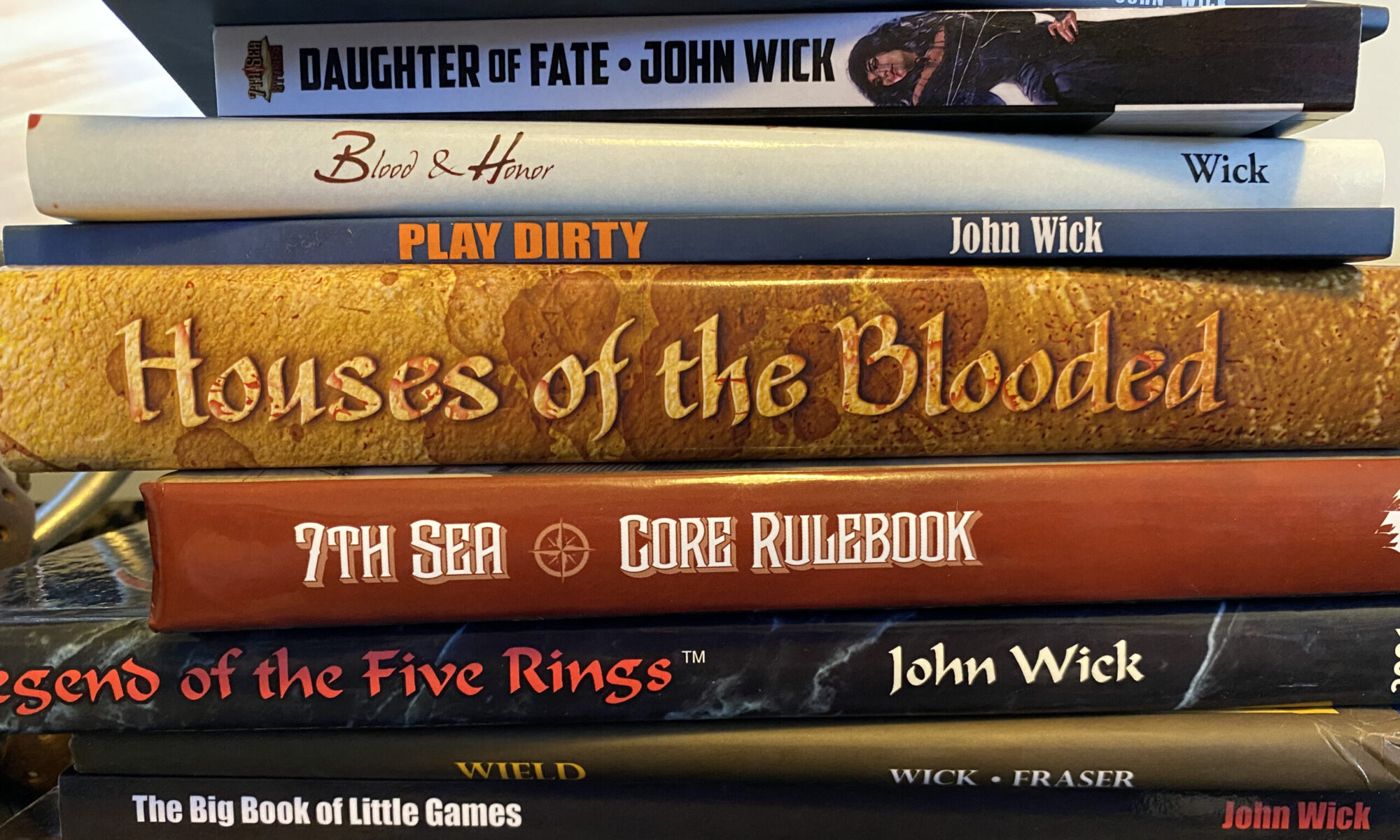When we started designing the first Legend of the Five Rings CCG expansion (Shadowlands), one of the local LA players approached us. He was enthusiastic about the game, knew its subtleties well, and was also an artist. His name was Ben and when we saw what he could do, we jumped on the opportunity to use him. When his art came in, it was obvious he understood the game. He put easter eggs in every card that the players would understand. He was a fan and his enthusiasm showed in the art, making it some of the best in the set. Sure, some of the other artists had better technical skills, but Ben’s cards were always right on the top of the heap for the players and they looked forward to each and every one.
When I started looking for an artist for Houses of the Blooded, I wanted an artist who would understand my goals. I didn’t want someone with just the best technical skills; I wanted someone who would appreciate the ideas behind the game and be familiar with the subtleties. Someone who would get it.
Without a doubt, that someone was Storn Cook.
Storn is a talented artist–no doubt–but more importantly, he understands the game. That’s because he’s playing the game. He’s part of the Sons of Kryos playtest crew. And Storn gets it… as can be demonstrated by his first two pieces for the book.
My goal with the art–something Storn understood right away–was creating an environment. The moment the players see the book–not just pick it up, but see it–is when their experience with the ven begins. The cover has to intrigue them enough to pick it up, but it also has to be the first line in a long, epic poem. It has to hook them, but also has to show them–not just tell, but show–what they’re getting into here. Then, when they pick the book up, open its pages, smell the ink and the paper, hear the crink in the binding, see the layout and see the art… all of these things sell the book. A book isn’t just an intellectual experience; it’s a tangible one, too.
Storn’s art helps us reach that goal. We came up with an art list that made the book feel like a piece of ven archeology. Each piece is a sketch from an anthropologist’s notebook, complete with handwritten notes, observations and speculations. We get no direct look at the ven–just a peek through a dim glass. Peering back through time. The illustrations do not show you who the ven were, but who they might have been. A look at how they saw themselves.
Go check out Storn’s journal and take a look. Hot damn, we’s gonna have a damn pretty book.
